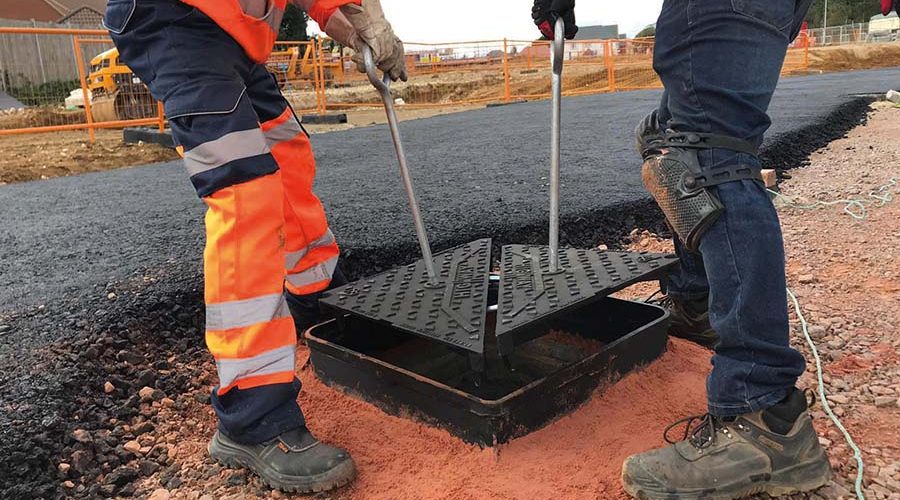Barry Turner, Technical Manager at leading UK designer, manufacturer and supplier of specialist ironwork products Wrekin Products, discusses the best way to ensure a high standard of installation which reduces the risk of failure and costly replacement.
Wrekin Products
Ironwork should comply with industry standards, but other elements of the wider installation (such as the bedding material) can often be misused or simply overlooked.
Bedding material can often be seen as the ‘adjustment’ material used to align ironwork with the surrounding road surface, when, in reality, it is the most vulnerable structural component in a conventional installation.
Highways England recognises this in advice note HA104/09, stating that “bedding failure is one of the main factors contributing to the current poor performance of chamber tops.” A number of issues can occur, such as reflective cracking on the tarmac induced by traffic loads inducing frame flexure. This can result in cracking of the underlying bedding mortar initiating at sharp, angular frame features. In this instance, mortar can then detach from ironwork and then be subject to a pulverising action from the moving frame component.
Care should, therefore, be taken in matching the performance characteristics of the elements that are intended to work together – the manhole cover or gully grate, the mortar, and the supporting manhole chamber structure. With a huge selection of products available on the market, it’s never been more important to understand all elements of an installation.
With this in mind, the simplest and quickest solution to avoid component failure is to take a full system approach. Utilising a full system from a reputable brand gives added peace of mind that all industry standards are met, but just as importantly, they have been designed specifically to work together. This reduces risk and gives a higher probability of a long-term and problem-free installation.







